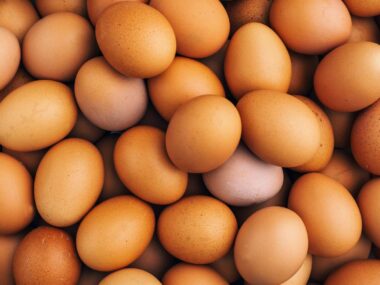The food industry has witnessed a significant shift in recent years towards plant-based alternatives to traditional meat products. Soybeans, with their high protein content and versatile nature, have emerged as a key ingredient in the development of meat substitutes.
This essay investigates the growing market for soy-based meat alternatives, focusing on popular products such as soy burgers, sausages, and nuggets, and exploring the factors driving their popularity.
Rise of Plant-Based Diets and Meat Alternatives
- Discuss the increasing consumer interest in plant-based diets driven by concerns about health, sustainability, and animal welfare.
- Explore the role of meat alternatives in providing options for individuals seeking to reduce their meat consumption or transition to a fully plant-based diet.
Nutritional Profile of Soy-Based Meat Alternatives
- Examine the nutritional composition of soy-based meat alternatives, highlighting their protein content, fibre, vitamins, and minerals.
- Compare the nutritional benefits of soy-based meat alternatives to traditional meat products, emphasizing their lower saturated fat and cholesterol content.
Soy Burgers: A Plant-Based Patty Revolution

- Explore the development and popularity of soy burgers as a plant-based alternative to beef burgers.
- Discuss the ingredients and manufacturing process of soy burgers, including the use of soy protein isolate, flavourings, and binders.
- Highlight popular brands and products in the soy burger market, as well as consumer preferences and taste trends.
Soy Sausages: Crafting Plant-Based Links
- Investigate the innovation and diversity in soy sausage products, including breakfast sausages, Italian-style sausages, and chorizo.
- Discuss the use of soy protein, spices, and natural flavourings to replicate the taste and texture of traditional sausages.
- Examine the market landscape for soy sausages, including product availability, distribution channels, and consumer demand.
Soy Nuggets: Bite-Sized Plant-Based Delights
- Explore the growing market for soy nuggets, also known as soy-based “chicken” nuggets.
- Discuss the formulation and production process of soy nuggets, including texturization techniques to mimic the texture of poultry.
- Highlight the appeal of soy nuggets to children and families, as well as their versatility in various recipes and meal occasions.
Environmental and Sustainability Considerations
- Investigate the environmental benefits of soy-based meat alternatives compared to traditional meat production, including reduced greenhouse gas emissions, land use, and water consumption.
- Discuss challenges and opportunities in sourcing sustainable soybeans, as well as efforts to promote responsible agriculture and supply chain transparency.
Consumer Acceptance and Market Growth
- Analyze consumer attitudes and preferences towards soy-based meat alternatives, including factors influencing purchasing decisions such as taste, price, and convenience.
- Explore the growing market for soy-based meat alternatives globally, including sales trends, market segmentation, and forecasts for future growth.
Challenges and Future Outlook
- Discuss challenges facing the soy-based meat alternative industry, including competition from other plant-based proteins, regulatory considerations, and misconceptions about soy.
- Provide insights into future trends and developments in soy-based meat alternatives, such as innovation in product formulation, packaging, and marketing strategies.
Conclusion: Soy-based meat alternatives, including soy burgers, sausages, and nuggets, represent a growing segment of the plant-based food market, offering consumers flavorful, nutritious, and sustainable alternatives to traditional meat products.
As consumer demand continues to rise and innovation drives product development, soy-based meat alternatives are poised to play a significant role in the transition towards a more sustainable and plant-forward food system.
Related Tags
Taiwo Olawuyi
Taiwo Olawuyi is a highly dedicated and passionate professional blogger, renowned for her ability to create captivating, informative, and engaging content in the realm of health and wellness. She holds a Bachelor's degree in Political Science from Olabisi Onabanjo University and a Master's degree in Adult Education from the prestigious University of Ibadan. Her profound passion for health and wellness, coupled with her unwavering dedication to her audience, serves as a constant source of inspiration and enlightenment for readers worldwide.










